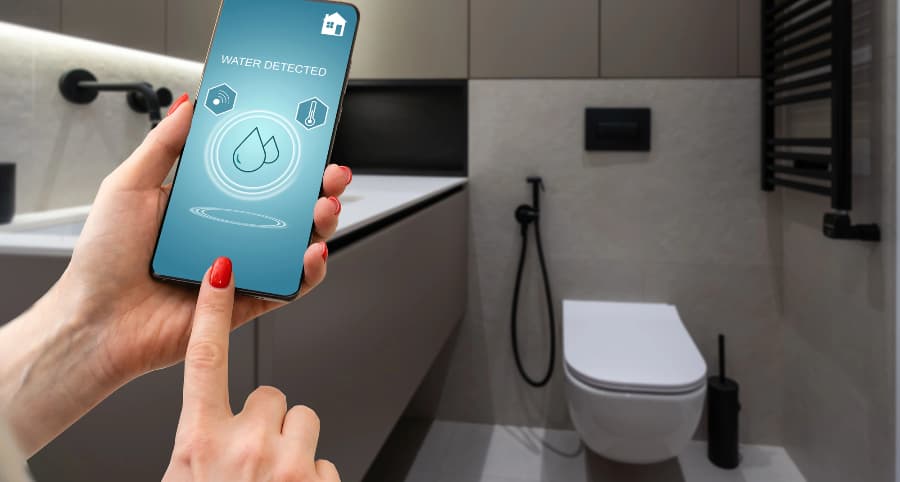How does a water sensor work and why use one with your Newark smart home?

One small leak at your house can result in big problems and thousands of dollars worth of damage. You have to protect against this threat; fortunately, there’s a simple way to achieve this. A water sensor is a budget-friendly, simple, and effective solution. Explore how they work and why you should incorporate water sensors into your Newark smart home.
How water sensors safeguard Newark your home
Water infiltrates homes in various ways, whether from a weather-related event, plumbing failure, appliance snafu, or simple human error. No matter how it occurs, you need to know at once, and this is where water sensors come in. But how do they really work?
Many water sensors are conductive and operate with a pair of electrodes. When water comes in contact with the electrodes, an electrical link is established, activating your alarm. You’ll also discover capacitive sensors that give off an electrical field. When water reaches the conductive parts of these components, the field is disrupted, and your alarm activates. Optical sensors utilizing infrared LED light are another choice.
Get more from your water sensor
Certain specialized water sensors give you even more protection as they use incorporated temperature sensors. This is an excellent benefit in preventing frozen pipes. If there’s a drastic decrease in temperature, you’ll be notified at once. Taking action before pipes break will shield you from water infiltration and expensive repairs.
Why integrate water sensors into your Newark smart home?
When water problems occur, you must be notified immediately. You can reach this goal by incorporating water sensors into your smart home. Whether you’re home to hear the alarm or somewhere else, you’ll receive an instant alert on your cell phone. As an added benefit, your round-the-clock monitoring team will be informed. Each moment matters in a water emergency to limit the destruction and disruption to your family.
Where should you place water sensors?
Any area susceptible to water infiltration is an ideal position for water sensors. Place them in these locations:
- Bathrooms: Place at the back of toilets or next to bathtubs.
- Basements: Water commonly enters lower floors through leaky walls or because of excessive rain or broken sump pumps.
- Next to water heaters or appliances: Any water-connected appliance may leak in time.
- Underneath sinks: Water sensors are perfect for detecting plumbing leaks in locations not easy to see.
- Attics: Catch roof leaks quickly and avert expensive repairs.
Get water sensors with your Vivint smart home
Give your residence the complete protection it deserves with advanced components from Vivint. Our water sensors in Newark connect to your Vivint smartphone app to send you immediate alerts whenever your alarm is triggered. You also get built-in temperature sensors to avoid pipe freezing. Learn more about the smart home tools available in Newark by reaching out to (973) 566-5423 today.
